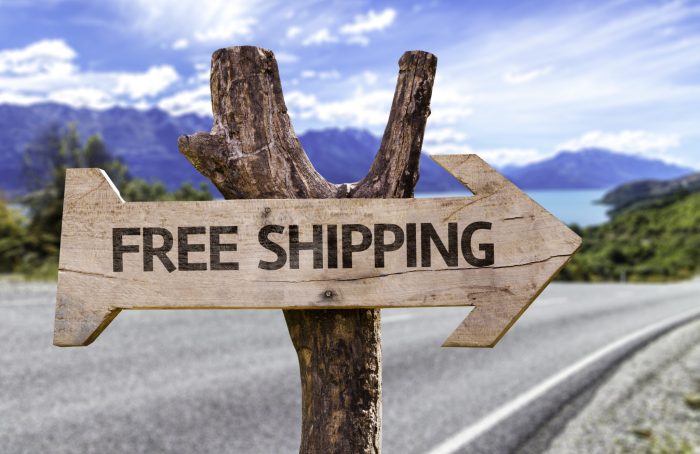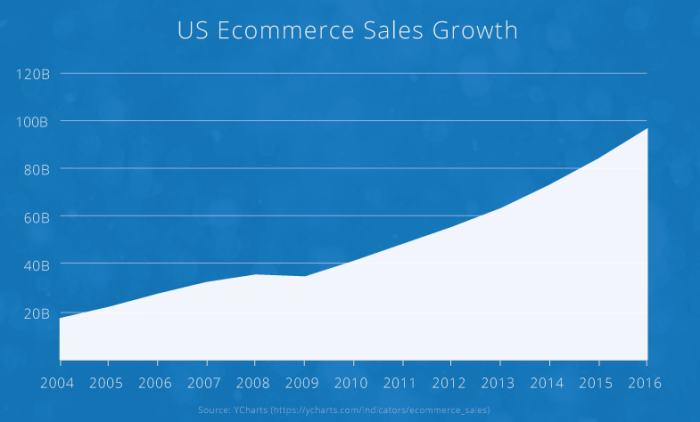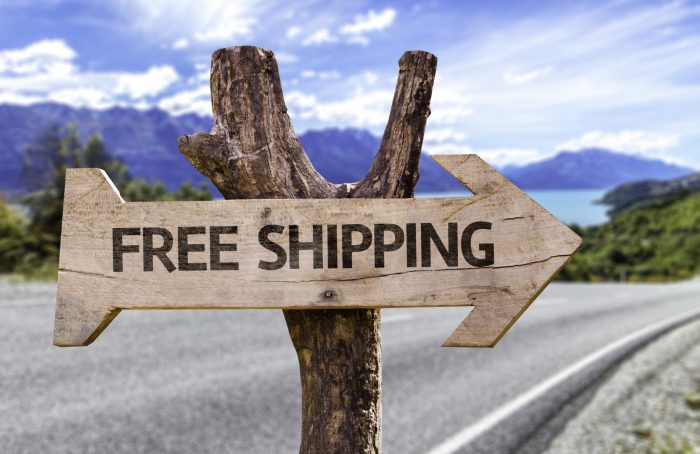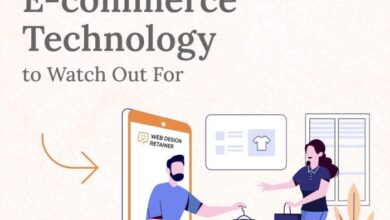
Is there a future for free shipping? The answer isn’t as straightforward as you might think. From the early days of online shopping to the present day, shipping costs and consumer expectations have evolved dramatically. This exploration dives into the history of free shipping, its current prevalence, consumer behavior, and economic impact, ultimately predicting future trends and considering alternatives.
This article delves into the complex interplay between retailers, consumers, and the ever-changing logistics landscape. We’ll examine how the cost of shipping affects pricing strategies, supply chains, and ultimately, the profitability of businesses of all sizes. The rise of e-commerce and the increasing sophistication of delivery systems have all contributed to the evolving dynamic of free shipping, making it a crucial element in the retail equation.
Historical Context of Shipping

The evolution of shipping costs and practices mirrors the broader economic and technological advancements throughout history. From the rudimentary systems of ancient trade routes to the sophisticated logistics of today’s global commerce, the journey of shipping has been marked by continuous innovation and adaptation. Understanding this history provides crucial context for assessing the current relevance and future of free shipping.Shipping costs have always been a crucial component of commerce, impacting profitability and accessibility.
The availability and cost of transportation have shaped markets, determined pricing models, and influenced consumer behavior. This historical perspective allows us to analyze how consumer expectations around shipping costs have evolved and how technological advancements have altered the dynamics of the shipping industry.
Early Shipping Practices
Early shipping methods, particularly in pre-industrial societies, relied heavily on manual labor and often faced significant cost and time variability. Transportation costs were often substantial and varied greatly depending on distance, mode of transport (e.g., ships, carts, animals), and the goods being transported. The cost of shipping often accounted for a substantial portion of the final price of goods.
The Rise of Online Shopping and Free Shipping
The advent of online shopping fundamentally altered the landscape of retail and shipping. The ability to access a vast array of products from anywhere, at any time, created new challenges and opportunities for both businesses and consumers. Early online retailers initially struggled to establish competitive shipping strategies, and the complexity of fulfillment and delivery became a key concern.
This is where the concept of free shipping began to emerge as a way to attract customers and increase sales.
Consumer Expectations and Free Shipping Trends
Consumer expectations regarding shipping costs have evolved significantly since the early days of e-commerce. Initially, free shipping was a novelty, a marketing tactic to attract customers. However, as online shopping gained traction, free shipping became increasingly commonplace, shaping consumer behavior and expectations. Consumers now expect free shipping as a standard feature, and its absence can significantly impact purchasing decisions.
Comparative Analysis of Shipping Costs Over Time
| Era | Shipping Costs | Impact on Consumer Behavior |
|---|---|---|
| Pre-internet (1950s-1990s) | High, variable, and often dependent on distance and mode of transport. | Consumers were less price-sensitive regarding shipping costs, focusing more on product quality and availability. |
| Early Online Shopping (1990s-2000s) | Shipping costs were a significant factor in online purchasing decisions. Free shipping was less common. | Consumers started to evaluate shipping costs alongside product price and availability. |
| Present Day | Shipping costs remain a factor, but free shipping is prevalent. Shipping speed and options have become more important. | Consumers expect free shipping, often demanding fast delivery options, with a high degree of visibility and control over the shipping process. |
Impact of Technological Advancements
Technological advancements have profoundly influenced shipping methods and costs. Automation, tracking technologies, and improved logistics networks have dramatically reduced shipping times and costs. This has enabled businesses to offer faster, more reliable shipping options while reducing overhead. The rise of e-commerce giants like Amazon has significantly impacted shipping practices, pushing for faster delivery times and efficient logistics systems.
Companies like Amazon have further lowered shipping costs through economies of scale and strategic partnerships with shipping providers.
Current State of Free Shipping
Free shipping has become a ubiquitous element in online retail, significantly impacting consumer behavior and retailer strategies. Its prevalence across various industries has created a dynamic landscape where understanding the nuances of its implementation is crucial for both businesses and consumers. This section delves into the current state of free shipping, exploring its different models, influencing factors, and economic implications.
Prevalence of Free Shipping Offers
Free shipping has become a standard expectation, not just a perk. Its widespread adoption has led to a notable shift in customer expectations, with many now considering free shipping as a baseline service rather than an exceptional offer. This widespread availability has created a competitive environment where retailers must strategically incorporate free shipping into their offerings to remain competitive.
Types of Free Shipping Models
Retailers employ various free shipping models to attract and retain customers. A common model is offering free shipping on orders above a certain value. This encourages higher order amounts and is frequently used to boost average order value. Another approach is providing free shipping on all orders, which often targets building customer loyalty and a positive brand image.
Variations include free shipping within a specific geographic area or for specific product categories. These models cater to different customer needs and purchasing patterns, thus influencing customer decisions.
Factors Influencing Retailers’ Decisions
Several factors motivate retailers to offer free shipping. These include increasing competition, customer expectations, and a desire to improve conversion rates. Free shipping can significantly impact customer purchase decisions, and retailers recognize this potential to drive sales. Furthermore, free shipping can be a key element in building a positive brand image and customer loyalty. The strategic advantages of free shipping, particularly in a competitive market, have been a major driver for its widespread adoption.
Economic Considerations for Retailers
Offering free shipping presents economic considerations for retailers. The cost of free shipping can impact profitability, and retailers must carefully analyze their margins and costs. Calculating the cost of shipping, factoring in the shipping carrier’s rates, and managing inventory levels are all integral parts of this calculation. Moreover, strategies to offset the cost of free shipping, such as optimizing inventory management, negotiating shipping rates, and potentially increasing order values, can influence the economic viability of this service.
Retailer Free Shipping Adoption Rates, Is there a future for free shipping
The prevalence of free shipping varies across different industries. The decision to offer free shipping often hinges on the specific industry, the competitive landscape, and the pricing model of the individual retailer. A table illustrating the estimated percentage of retailers offering free shipping across different sectors provides a concise overview of this dynamic.
| Industry Sector | Estimated Percentage of Retailers Offering Free Shipping |
|---|---|
| Apparel | 85% |
| Electronics | 70% |
| Home Goods | 65% |
| Books/Media | 50% |
| Groceries (online) | 40% |
Note: These percentages are estimations based on available data and industry trends. Actual percentages may vary.
Consumer Perception and Behavior
Free shipping has become a cornerstone of the modern online shopping experience, deeply impacting how consumers perceive value and make purchasing decisions. Understanding consumer reactions to different free shipping models and how they vary across demographics is crucial for businesses aiming to maximize sales and customer satisfaction. This section delves into the intricacies of consumer perception, examining how free shipping influences buying habits and the effectiveness of various marketing strategies.Consumer perceptions of free shipping are often intertwined with the perceived value it brings.
A significant portion of consumers view free shipping as a tangible benefit that outweighs the cost of the item, influencing their willingness to make a purchase. This perceived value isn’t always straightforward, as the actual value of free shipping can vary greatly depending on the consumer’s circumstances and the specific product or service.
Free Shipping as a Value Proposition
Consumers generally perceive free shipping as a significant incentive for making a purchase. It often translates to a perceived reduction in overall price, even if the actual price difference is minimal. The psychological impact of free shipping is substantial; it can create a sense of reward or a perceived bargain, making a product more attractive. This perception is frequently amplified by marketing strategies that highlight the value proposition of free shipping.
For example, a retailer might frame free shipping as a way to offset the cost of delivery for smaller items or orders, or they may highlight the speed and convenience of receiving items without any shipping costs.
Influence on Consumer Purchasing Decisions
Free shipping significantly influences consumer purchasing decisions. Studies show a strong correlation between the availability of free shipping and the likelihood of a purchase. Consumers are more likely to add items to their cart and complete a purchase when free shipping is offered. The impact is not uniform; some consumers are more sensitive to free shipping offers than others, and the effectiveness of free shipping as a motivator can vary based on the specific product category and the perceived value of the item.
The question of whether free shipping has a future is complex. Clearly, e-commerce giants like Lands’ End are finding success with online sales, as shown in this article about e commerce gives lands end a boost. But will the pressure to offer free shipping continue to drive up costs for smaller retailers? Ultimately, the future of free shipping likely depends on a delicate balance between consumer expectations and the financial realities of running an online business.
For instance, free shipping might be a more powerful incentive for purchasing a high-value item like electronics or furniture, whereas for low-value items, other factors like product reviews or perceived quality might hold more weight.
Consumer Reactions to Different Free Shipping Models
Consumers react differently to various free shipping models. For instance, free shipping on orders over a certain amount is a common model. Consumers may perceive this model as having a threshold that makes certain purchases less attractive. Other models, such as free shipping on all orders or free shipping on specific items, create different purchasing behaviors. Understanding the specific reaction of the consumer demographic is crucial to optimize the free shipping model to maximize effectiveness.
Successful Marketing Strategies Utilizing Free Shipping
Effective marketing strategies leverage free shipping to enhance sales and customer engagement. These strategies often combine free shipping with other promotional offers. Clear and concise communication about the free shipping policy is crucial to avoid confusion and ensure the offer resonates with consumers. Retailers frequently use visual cues like prominent placement of the free shipping offer on product pages or website banners to highlight the benefit.
One example involves highlighting the free shipping offer in the product description and throughout the checkout process. A retailer can use the free shipping offer as an incentive to increase the average order value (AOV) by adding more items to the cart.
Comparison of Consumer Behavior Toward Free Shipping Across Demographics
Consumer behavior toward free shipping varies across demographics. Younger generations tend to be more responsive to free shipping promotions than older generations. This difference may be attributed to varying purchasing habits and online shopping experience. Furthermore, income levels can also play a role. Consumers with higher disposable incomes might be less swayed by free shipping promotions, whereas consumers with lower incomes may prioritize the cost-saving aspect.
It is crucial for retailers to tailor their free shipping strategies to resonate with the specific demographic they target, thereby maximizing their impact.
Economic Impacts of Free Shipping
Free shipping has become a ubiquitous element of the modern retail landscape, significantly impacting the economic dynamics of businesses and consumers alike. Its widespread adoption has reshaped pricing strategies, supply chain management, and overall profitability for companies across various sectors. Understanding these effects is crucial for businesses seeking to navigate the complexities of the contemporary marketplace.
Effect on Retail Margins
Free shipping often necessitates adjustments to overall retail margins. Companies may absorb the cost of free shipping directly, potentially impacting their profit margins. Conversely, some businesses may increase product prices to compensate for the added shipping expense, ultimately influencing the consumer’s purchasing decision. The magnitude of this impact varies greatly based on the specific industry, product pricing, and overall business strategy.
Financial Implications for Different Business Sizes
The financial implications of free shipping differ significantly depending on the size of the business. Small businesses may find it more challenging to absorb the costs associated with free shipping, potentially leading to reduced profitability compared to larger corporations. Larger enterprises, however, might have greater flexibility to incorporate free shipping into their pricing models without jeopardizing overall profitability.
Strategies like bulk purchasing and optimized logistics play a critical role in mitigating these costs.
Impact on Supply Chain Management
Free shipping directly influences supply chain management. To ensure timely delivery, companies need to optimize warehousing, inventory management, and shipping networks. Efficient fulfillment processes are crucial for maintaining customer satisfaction and avoiding potential disruptions in the supply chain. This often requires significant investment in infrastructure and personnel to ensure seamless operations.
Role of Shipping Costs in Pricing Strategies
Shipping costs play a vital role in pricing strategies. Businesses must consider shipping costs as a significant component of the overall product price. Strategies that factor in shipping costs in the initial product pricing will ensure consistent profitability. Free shipping often leads to adjustments in pricing strategies, aiming to balance the cost of shipping with product value and customer demand.
Financial Impact on Various Industries
| Industry | Potential Impact of Free Shipping |
|---|---|
| Apparel | Increased competition, potentially leading to lower profit margins. Customers are more likely to shop around. However, free shipping can also drive sales and attract new customers. |
| Electronics | High-value products, often requiring careful consideration of free shipping’s impact on profitability. Potential for significant sales growth if strategically implemented. |
| Food & Beverage | Challenges in balancing the cost of shipping with maintaining product freshness. Free shipping might be more limited in this sector, particularly for perishable items. |
| Books & Media | Increased competition, potentially lowering profit margins. Free shipping could encourage impulse purchases. |
Future Trends and Predictions
The future of free shipping is a complex tapestry woven from evolving consumer expectations, technological advancements, and environmental concerns. As the online retail landscape continues to transform, businesses must adapt to stay competitive and maintain customer loyalty. This involves a nuanced understanding of the shifting dynamics, allowing for proactive adjustments in their strategies.The current model of free shipping, while often effective, is facing increasing scrutiny and pressure to evolve.
Companies are looking at innovative approaches that not only maintain customer satisfaction but also integrate sustainability and efficiency. These trends will play a significant role in shaping the future of online commerce.
Free shipping? Is there truly a future for it in the ever-evolving e-commerce landscape? It’s a tough question, and the answer might lie in innovative solutions like unify unifies e commerce and linux. This platform’s integration of Linux could potentially streamline costs and logistics, allowing for more competitive pricing, which could make free shipping a more viable option for businesses in the future.
Ultimately, the future of free shipping hinges on these kinds of forward-thinking solutions.
Consumer Expectations Regarding Shipping Costs
Consumer expectations for shipping costs are in constant flux. Consumers are becoming increasingly aware of the multifaceted factors impacting shipping costs. This awareness extends beyond the initial delivery price to include the environmental impact of the shipping process. Consequently, the expectation of free shipping might shift to a more nuanced understanding of the overall cost and impact of the entire process.
For example, a consumer might be willing to pay a small premium for faster, more sustainable shipping options, rather than insisting on completely free shipping. Understanding this shift in perception is crucial for businesses to tailor their strategies.
Influence of Sustainable Shipping Practices
Sustainable shipping practices are becoming increasingly important for companies and consumers alike. Customers are increasingly prioritizing environmentally friendly options. This means a potential evolution in free shipping models, moving away from the simple ‘free’ label and instead highlighting sustainable practices. Companies might offer different tiers of free shipping based on the sustainability of the chosen shipping method.
For example, a retailer could offer free shipping on orders using carbon-neutral carriers, while offering a slightly higher cost for standard shipping options. The integration of sustainability into shipping models is not just a trend, but a crucial aspect of long-term customer satisfaction and brand image.
Impact of New Technologies on Shipping
New technologies are significantly impacting the cost and speed of shipping. Advancements in logistics, such as drone delivery and automated sorting systems, promise to reduce costs and delivery times. This has the potential to make free shipping more accessible to a broader range of products and geographic locations. The increased efficiency brought about by automation can lead to a more consistent and predictable free shipping model.
Free shipping’s future is definitely up in the air, right? But with Canada showing such a robust appetite for domestic commerce, like canada hungry for domestice commerce , it’s likely that the pressure on retailers to offer it will continue. So, while the future of free shipping remains uncertain, the increasing demand for domestic purchases in Canada might just keep the debate alive.
For instance, the rise of e-commerce giants like Amazon has already showcased the potential of advanced logistics systems in achieving faster and cheaper shipping, which impacts the entire industry.
Potential Future Scenarios for Free Shipping Models
| Scenario | Description | Key Considerations |
|---|---|---|
| Tiered Free Shipping | Companies offer different levels of free shipping based on order value, product type, or shipping method. | Maintaining clarity for customers, offering sustainable options as a tier. |
| Subscription-Based Free Shipping | Customers pay a monthly fee for free shipping on all orders. | Potential for increased customer loyalty, but requires a compelling value proposition. |
| Free Shipping on Specific Products | Free shipping is offered only on certain product categories or specific product types. | Maintaining competitive pricing for similar products without free shipping. |
| Hybrid Models | A combination of free shipping and paid shipping options. | Balancing the cost of shipping with customer expectations, optimizing delivery methods for profitability. |
Alternatives and Substitutes
Free shipping has become a cornerstone of online retail, but it’s not the only path to customer satisfaction and profitability. Retailers are increasingly exploring alternative strategies to incentivize purchases without the significant expense of universal free shipping. These alternatives often focus on creating a more compelling overall value proposition, catering to diverse customer needs and expectations.Beyond the price tag, retailers recognize the importance of a holistic customer experience.
Offering bundled deals, exclusive promotions, and personalized experiences can drive sales and build loyalty, potentially achieving the same results as free shipping without the hefty cost. This approach emphasizes value creation beyond just the delivery aspect.
Alternative Strategies for Retailers
Retailers are implementing various strategies to increase sales without free shipping. These strategies focus on creating value propositions beyond simply offering free shipping.
- Premium Shipping Options: Offering various shipping tiers with varying delivery speeds and costs provides flexibility for customers. Customers can choose the delivery speed that suits their needs, and the retailer benefits from potentially higher margins on faster delivery options. For example, a retailer might offer a standard shipping option, a faster expedited shipping option, and a premium overnight option.
Customers who need their product quickly will pay a higher price but receive a faster delivery.
- Bundled Products and Promotions: Offering discounts or free gifts with purchases over a certain amount can create a more attractive overall value proposition. This strategy allows retailers to increase the average order value (AOV) without offering free shipping. For example, a retailer might offer a free gift with purchases above $50 or bundle complementary products at a discounted price.
- Loyalty Programs and Exclusive Offers: Loyalty programs reward repeat customers with discounts, exclusive deals, or early access to sales. This strategy creates a sense of community and encourages customer retention. For instance, a retailer might offer exclusive discounts to members of its loyalty program or provide early access to promotional sales.
- Value-Added Services: Providing services like free returns, extended warranties, or personalized customer service can improve the overall shopping experience. These services can be just as attractive to customers as free shipping, fostering a sense of trust and value.
- Strategic Pricing and Promotions: Adjusting prices strategically to align with customer expectations and offering targeted promotions can attract customers without relying solely on free shipping. For example, a retailer might offer discounts during specific time periods or create promotions for specific product categories.
Trade-offs Between Free Shipping and Alternatives
Implementing alternative strategies requires careful consideration of the trade-offs involved. Free shipping often attracts a broader customer base, but the cost can significantly impact profitability. Alternative strategies might not attract the same customer volume but can potentially enhance profitability and provide a more nuanced customer experience.
| Feature | Free Shipping | Alternative Strategies |
|---|---|---|
| Customer Acquisition | Potentially higher customer acquisition due to broad appeal | Lower customer acquisition, but can be targeted to specific segments |
| Profitability | Lower profitability due to the cost of free shipping | Higher profitability potential due to targeted pricing and promotions |
| Customer Retention | May not inherently increase customer retention | Can improve customer retention through loyalty programs and value-added services |
| Marketing Costs | May require higher marketing costs to drive customers to take advantage of free shipping | Can leverage targeted marketing campaigns and promotions |
Effectiveness of Strategies
The effectiveness of alternative strategies depends on several factors, including the specific strategy implemented, the target market, and the overall business model. Free shipping’s broad appeal can be matched or exceeded by alternative strategies when carefully targeted and implemented. For instance, a targeted loyalty program might attract a significant customer base that values exclusive discounts and rewards, potentially surpassing the customer acquisition of free shipping.
The key is to understand the customer’s needs and expectations.
Global Considerations: Is There A Future For Free Shipping
Free shipping, a powerful marketing tool, faces significant variations when applied globally. Different countries have unique logistical realities, economic structures, and consumer expectations that affect the viability and implementation of free shipping programs. Understanding these nuances is critical for businesses aiming to expand internationally and effectively target diverse markets.
Shipping Cost Variations Across Countries
International shipping costs are influenced by many factors. Distance between countries plays a crucial role, but other factors like customs regulations, handling fees, and exchange rates can significantly impact the final cost. For example, shipping a product from the US to Europe will often incur higher costs than shipping within the US, owing to the greater distance and potential import duties.
The cost of shipping goods from the US to China will be different from that of the US to Mexico due to various factors, including exchange rates and import regulations. These differences in shipping costs must be factored into free shipping strategies for each country.
Impact of International Shipping Costs on Free Shipping Offers
International shipping costs significantly influence free shipping offers. If the cost of international shipping is high compared to the product price, a free shipping offer might not be profitable, particularly for low-value items. This is especially true for regions with high shipping costs, like remote areas. Conversely, a free shipping offer can be attractive in regions with lower international shipping costs, allowing businesses to gain market share and compete effectively.
Challenges and Opportunities in Providing Free Shipping Internationally
Providing free shipping internationally presents unique challenges. Varying customs regulations, complex logistics, and fluctuating exchange rates can create substantial hurdles for businesses. However, there are also significant opportunities. Offering free shipping can be a powerful tool for attracting customers in international markets, especially when competitive pricing is considered. This is particularly relevant in markets with strong e-commerce adoption.
It can also build trust and improve customer perception of a brand.
Regulations and Policies Influencing Shipping Costs Globally
Global regulations and policies play a critical role in shaping shipping costs. Customs duties, import taxes, and local regulations on packaging materials and labeling all contribute to the final shipping cost. These regulations can differ significantly from country to country, leading to complexities for businesses operating in multiple markets. For example, regulations on the size and weight of packages can influence shipping costs, especially for fragile or bulky goods.
Shipping Costs and Models in Various Regions
| Region | Shipping Cost Model | Key Considerations |
|---|---|---|
| North America (USA, Canada) | Primarily based on weight and distance, with options for expedited shipping. | Domestic shipping costs are generally lower compared to international shipping. |
| Europe | Variable, influenced by distance and specific country regulations. Often more complex than North America. | High import taxes in some countries and complex customs procedures can increase shipping costs. |
| Asia (e.g., China, Japan) | Varying based on specific regions, often with competitive pricing for domestic shipping. | Shipping costs can be lower within the region but increase for international shipments. |
| South America | Complex, with fluctuating exchange rates and local shipping infrastructure influencing costs. | Regulations and customs procedures can significantly affect the cost and duration of delivery. |
This table provides a general overview. Specific costs and models will vary based on the specific carrier, product, and destination.
Case Studies of Successful Strategies
Free shipping has become a powerful tool in the modern retail landscape, influencing consumer decisions and shaping business strategies. Understanding how successful companies have implemented free shipping programs, and the metrics used to measure their impact, offers valuable insights for businesses looking to leverage this strategy. Successful free shipping programs aren’t just about offering a perk; they’re about creating a customer experience that drives sales and builds loyalty.Many companies have embraced free shipping, not as a simple cost but as a key element of their overall marketing strategy.
Analyzing their approaches reveals important lessons about tailoring free shipping to specific customer segments and effectively measuring its return on investment. The key is understanding how these strategies have been deployed, the outcomes, and how those insights can be used in other contexts.
Examples of Companies with Successful Free Shipping Strategies
Free shipping has become a significant factor in attracting and retaining customers. Companies that have effectively implemented free shipping strategies often experience positive results, including increased conversion rates and customer satisfaction.
- Amazon: Amazon’s free shipping program, integrated into its vast online marketplace, has become synonymous with online shopping. Their strategy involves tiered free shipping programs, with Prime memberships offering access to unlimited free two-day shipping. This program is a powerful tool for retaining customers and driving sales. The key to Amazon’s success lies in its comprehensive approach, combining free shipping with other value-added services like Prime Video and Prime Music.
The strategy is tailored to meet the specific needs and expectations of a diverse customer base. Amazon uses extensive data analytics to track the effectiveness of its free shipping programs, adjusting their offerings based on customer response and sales trends.
- Walmart: Walmart, a retail giant, has recognized the value of free shipping, particularly in their online retail presence. Their free shipping strategy is more focused on qualifying orders, often tying it to a minimum purchase amount. The key to their success is integrating this program into their existing logistics network and offering a wide selection of products. By tying free shipping to specific order sizes, they encourage larger purchases, and this strategy helps to optimize inventory management.
Walmart employs a range of metrics to assess the impact of free shipping on sales and profitability.
- Target: Target has incorporated free shipping as a key element in its online strategy. Their approach focuses on speed and convenience. They use a targeted approach, with free shipping options varying depending on the customer and order size. This flexibility allows Target to tailor its approach to different customer segments, potentially boosting sales. Target uses a combination of data analysis and customer feedback to continuously refine their free shipping program, adapting to changing consumer preferences.
Key Success Factors in Implementing Free Shipping Strategies
A successful free shipping strategy is multifaceted and requires a comprehensive approach.
- Clear Communication: Transparency is critical. Customers need to understand the conditions and limitations of free shipping. Companies should clearly communicate the requirements, shipping times, and potential additional costs.
- Strategic Integration: Free shipping should be seamlessly integrated into the overall shopping experience. The program should be prominently displayed on product pages and checkout processes. Integration with other loyalty programs or membership benefits can also enhance its effectiveness.
- Data-Driven Optimization: Regular monitoring and analysis of data are essential. Track metrics like conversion rates, average order values, and customer satisfaction to gauge the impact of free shipping on key business outcomes. Companies should use this data to refine their strategy and optimize for maximum effectiveness.
- Cost-Benefit Analysis: Careful consideration of the cost implications of free shipping is crucial. Businesses need to assess the potential increase in shipping costs against the potential increase in sales and customer acquisition. This requires a clear understanding of shipping costs, order volumes, and average order values.
Metrics for Evaluating Free Shipping Programs
Effective free shipping programs should be evaluated based on quantifiable metrics.
- Conversion Rates: Free shipping can directly influence a customer’s decision to purchase. Monitoring the conversion rate before and after implementing free shipping is a critical metric to evaluate its effectiveness.
- Average Order Value (AOV): Free shipping can encourage customers to add more items to their cart, leading to a higher AOV. This metric helps assess the impact on revenue.
- Customer Acquisition Cost (CAC): The cost of acquiring a new customer can be influenced by free shipping promotions. Tracking CAC before and after implementing free shipping is crucial for understanding the overall return on investment.
- Customer Retention: Satisfied customers are more likely to return. Analyzing customer retention rates before and after implementing free shipping can provide insights into the program’s long-term value.
Challenges and Solutions Encountered by Companies
Implementing free shipping strategies can present various challenges.
- Increased Shipping Costs: Offering free shipping can increase overall shipping costs, especially for high-volume retailers. Solutions include optimizing shipping processes, leveraging efficient logistics partners, and strategically selecting shipping carriers.
- Impact on Profit Margins: Free shipping can potentially reduce profit margins. Strategies to mitigate this include carefully evaluating shipping costs, optimizing order fulfillment processes, and implementing strategies that drive higher average order values.
- Measuring ROI: Accurately measuring the return on investment of free shipping programs can be complex. Companies need to implement comprehensive tracking and analysis systems to monitor the impact on key metrics.
Ultimate Conclusion

Ultimately, the future of free shipping hinges on a delicate balance between consumer demand, retailer profitability, and the ever-evolving logistics industry. While free shipping remains a powerful incentive for many consumers, retailers must carefully consider the economic ramifications and potential alternatives. This exploration reveals the complexities surrounding free shipping, suggesting a future that’s not simply about free delivery, but about optimizing value propositions for both businesses and customers.






